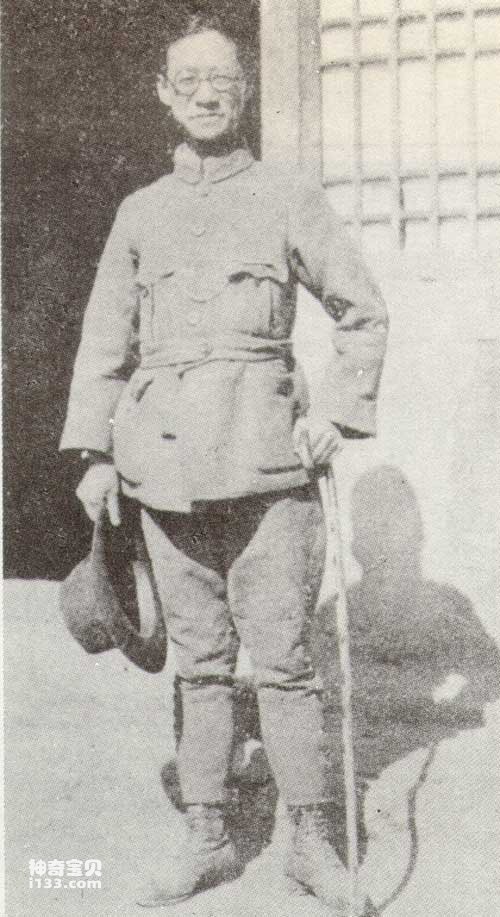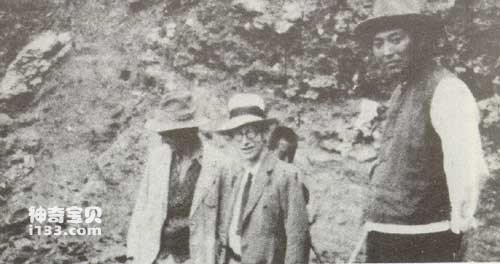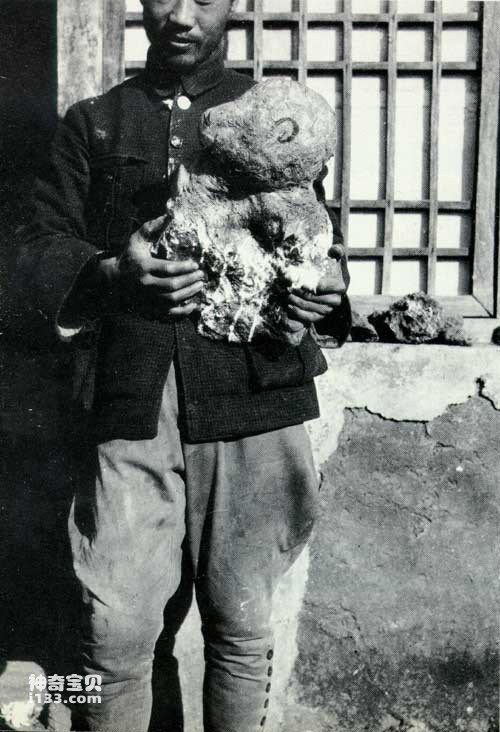The discovery of ancient human fossils in Zhoukoudian made Bu Dasheng, who was deeply involved in the "Central Asian Fever", extremely excited. He decided to include the excavation and research of Zhoukoudian as a "related additional project" in his Central Asia expedition plan in cooperation with Andersen. Therefore, before the news of Zhoukoudian's new discovery was officially announced, he started the planned operation. On October 5, he drafted a report to Hu Hengde, who was then the head of the Administrative Committee of Peking Union Medical College, suggesting that the Rockefeller Foundation provide funds to fund further systematic excavations in Zhoukoudian and to prepare a physical anthropology research structure; then he Find Weng Wenhao, director of the China Geological Survey, to discuss specific cooperation plans.

Weng Wenhao
After much deliberation, they finally drafted an agreement called the "Agreement between the China Geological Survey and the Peking Union Medical College on cooperative research on Tertiary and Quaternary sediments in North China" in early February 1927, with financial support from the Rockefeller Foundation. With the support, the systematic excavation work of Zhoukoudian was officially started in the spring of 1927.

Li Jie [right] and Bu Lin [middle]
The Zhoukoudian cooperation project has Mr. Ding Wenjiang, one of the founders of Chinese geology, as the honorary host, and specific matters will be implemented through consultation between Bu Dasheng and Weng Wenhao. The personnel sent to Zhoukoudian to do practical work are: Li Jie, a geologist from the China Geological Survey, who serves as the field work director of Zhoukoudian; Bulin, a Swedish paleontologist who serves as the field work consultant of Zhoukoudian; Liu Delin, a famous American paleontologist. A technician from Gelenjie served as a technical assistant for field excavations in Zhoukoudian and did indoor fossil repair work; Xie Renfu, a clerk from Bu Dasheng, was sent to Zhoukoudian as Liu Delin's assistant.
The excavation work in the first year was a success, and 500 boxes of fossils were obtained. Moreover, Bulin discovered a well-preserved human tooth fossil on October 16, which was unearthed at a location close to where Shidansky discovered the first human tooth. The location is very close.
Bu Dasheng described and studied this newly discovered human tooth fossil in detail and believed that it was an adult's first left lower molar, with the same properties as the molar discovered by Shidansky. Therefore, he proposed to establish a new genus and species of hominin based on these human tooth fossils, namely "Chinese ape-man Beijing species" or "Chinese ape-man Beijing".

Yang Zhongjian [left] and Pei Wenzhong [right]
At the end of 1927, Bu Dasheng returned to Canada, and the work in Zhoukoudian in 1928 was directed by Weng Wenhao and Fulton of Union Medical College. This year, two figures who would later become giants in the Chinese scientific community came to Zhoukoudian. They were Yang Zhongjian and Pei Wenzhong.
Yang Zhongjian graduated from the Department of Geology of Peking University in 1923 with a bachelor's degree in science. In 1927, he went to Germany to study in vertebrate paleontology at the Department of Geology, University of Munich, majoring in paleontology. He received a doctorate in philosophy in 1927. In 1928, he succeeded Li Jie and became the official agent of Zhoukoudian, where the geological survey was located.
Pei Wenzhong, who just graduated from the Department of Geology of Peking University, is only 24 years old. He went to Zhoukoudian with Yang Zhongjian. At first, he was mainly responsible for the management of labor and accounts. He also participated in excavations and became Bulin's right-hand man.
The harvest this year was even better than that of the first year. 575 boxes of fossil materials were excavated. Moreover, the right mandible of a Peking girl and the right mandible of an adult with three complete molars preserved were also discovered.
At the end of the year, work in Zhoukoudian faced a new situation. The special grant funded by the Rockefeller Foundation will expire in March of next year. However, the excavations in the past two years have made people realize that the amount of fossil deposits at the Peking Man site far exceeds the initial estimate, and it is simply impossible to remove it in the short term. Its excavation is complete. Moreover, this site is not only rich in content, but also presents very complex issues. If researchers only limit their vision here and do not expand to the surrounding areas, then they need to fully understand the geology and geology reflected in the Peking Man site. Questions like paleontology are difficult.
Therefore, Bu Dasheng, Ding Wenjiang, Weng Wenhao and others began consultations in the winter of 1928, considering a more extensive cooperation plan to continue Zhoukoudian's research, and establishing a "New Generation Research Laboratory" as an organization to implement the new plan structure.
After repeated consultations, Weng Wenhao and Bu Dasheng drafted the "Organizational Charter of the Cenozoic Research Laboratory of the China Geological Survey" on February 8, 1929. Since then, it has become China's first specialized institution engaged in Cenozoic geology, paleontology, especially paleoanthropology research, and my country's only authoritative institution for vertebrate paleontology and paleoanthropology research, currently ranked first in Asia. Chinese Academy of Sciences Vertebrate Paleontology The Cenozoic Research Laboratory of China Geological Survey, the predecessor of the Institute of Ancient Anthropology, was officially established. The establishment of this institution opened up a new situation in China's Cenozoic research, leading to the discovery of the first complete Peking Man skull that shocked the world, which we will talk about shortly, thus creating a new foundation for vertebrate paleontology and paleoanthropology in China. laid the foundation for a research career.
In this year, Bulin resigned from his post in Zhoukoudian and joined the Northwest Expedition. Yang Zhongjian also went to various places in Shanxi and Shaanxi to investigate the Cenozoic geology with De Chardin. Therefore, the excavation work in Zhoukoudian was led by Weng Wenhao, director of the China Geological Survey. and Bu Dasheng, honorary director of the New Generation Research Laboratory, decided to hand over the responsibility to Pei Wenzhong.
The work in the spring ended when the excavation reached layers 8-9. Several more tooth fossils of Peking Man were found in layers 8-9. As the autumn work progressed, the volume of the accumulation appeared to be gradually narrowing, and the excavable portion had gradually shrunk. However, when the excavable area is so narrow that it can only accommodate a few people to excavate, it is "a dark place" and the fissure extends obliquely to the south for a while.
Together with a worker, Pei Wenzhong tied a rope around his waist and was pulled by someone on the roof of the cave outside. They carefully hung him down and carefully observed the extended crack, and found that there were a large number of fossils buried inside. It was already the end of November, the weather was very cold, and it was already time to call it a day. But seeing so many fossils, Pei Wenzhong decided to extend the work for a few more days.
No one at the time would have imagined how significant the extension of this small crack and Pei Wenzhong's temporary decision were. The shocking discovery a few days later showed the people once again how important it is to persist in the most arduous efforts until the last moment.
At around 4 o'clock in the afternoon on December 2, the sun had already set, but Pei Wenzhong and several technicians were still excavating nervously in the biting cold wind. As the caves were dug deeper and deeper, the lighting during excavations had already been solved by gas lamps; but at this time, the space on the excavation surface was too small and the gas lamps could not be used, so the excavators had to dig with one hand and use the other hand. Hold a candle to illuminate.
Suddenly, Pei Wenzhong shouted: "What is this? It's a human head!" As soon as the word "human head" was uttered, all the excavators gathered around and stretched their heads to look down. The long-awaited thing finally appeared, and everyone was so excited.
This skull fossil is half buried in hard soil and half in loose soil. After Pei Wenzhong hollowed out the soil around the fossil, he gently pried it off with a crowbar. Part of the skull cracked due to the vibration, and Pei Wenzhong regretted it greatly; however, he also saw the thickness of the skull and the structure of the brain. The rupture was later bonded and still intact, which did not affect subsequent research in any way.

Pei Wenzhong holds a Pekingese skull in his arms
The skull was very moist when it was dug out and broke when touched. Pei Wenzhong and two technicians worked day and night to build a charcoal brazier to bake it. After drying it, they covered it with several thick layers of tissue paper with water, then covered it with gypsum sacks, and then dried it. After the plaster on the outside becomes dry and hard, the fossils wrapped inside will not be easily damaged. We call this kind of gypsum shell that protects fossils "Pilak" (Russian transliteration, which means "gypsum shell").
Finally, Pei Wenzhong wrapped the Pi Lao Ke, which contained the skull of the first Peking Man, in his two old quilts, and tied it with a mattress and blanket like ordinary luggage, and took a long-distance train on December 6. He personally sent it to the Cenozoic Research Laboratory of the China Geological Survey in Beijing.
The discovery of the first complete Peking Man skull shook the academic world like a spring thunder. It further confirmed that Peking Man was indeed an ancient human species, an ancestor of modern humans and the earliest human ancestor known at the time.
animal tags:
We created this article in conjunction with AI technology, then made sure it was fact-checked and edited by a Animals Top editor.